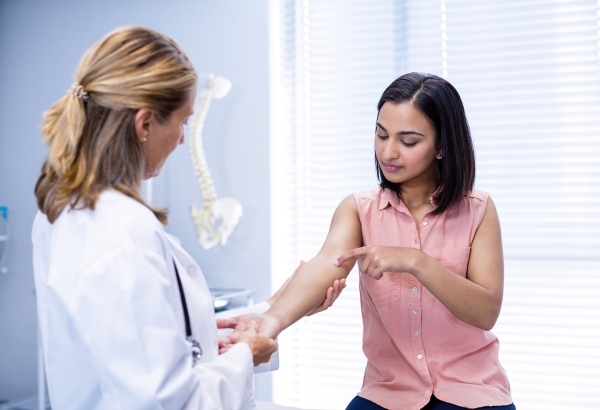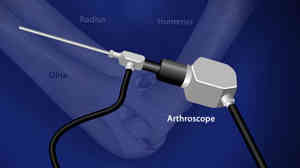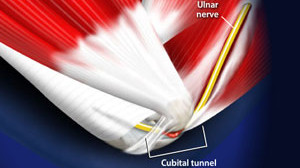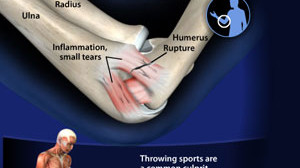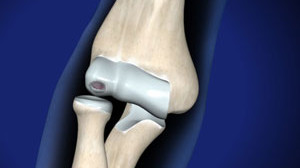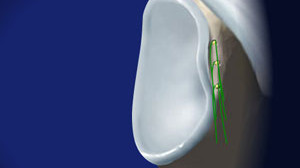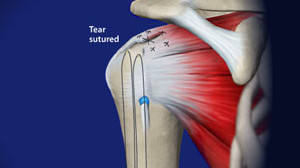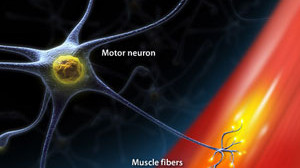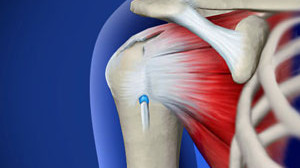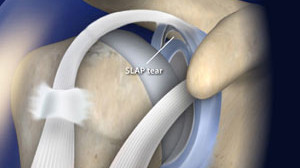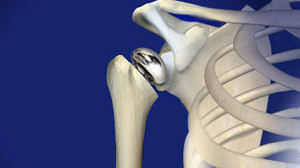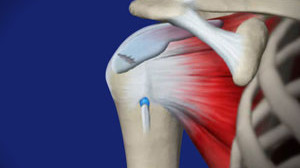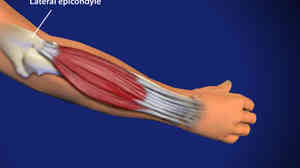-
Arthroscopic Debridement of the Elbow
This outpatient procedure, performed under local anesthesia with sedation or general anesthesia, allows the physician to examine the cartilage, bones, ligaments and tendons of the elbow for damage or disorders. The physician uses a small camera, called an arthroscope, which is inserted into the elbow.
-
Cubital Tunnel Syndrome
This condition is a compression injury to the ulnar nerve near the elbow. This is the nerve that produces a jolt when you bump your "funny bone."
-
Medial Ulnar Collateral Ligament Injury
This condition is an injury to the medial ulnar collateral ligament, a ligament composed of three bands located on the inner side of the elbow. The MUCL connects the humerus to the ulna. Injury to the MUCL can cause pain, weakness and sometimes a feeling of instability in the arm.
-
Osteochondritis Dissecans of the Elbow
Osteochondritis dissecans of the elbow typically affects young athletes, especially those involved in throwing sports or gymnastics. It occurs when a portion of bone or its overlying articular cartilage is cut off from the blood supply, creating a "dead" area of bone and cartilage. It commonly affects the capitellum, where the humerus meets the radius.
-
Arthroscopic Bankart Repair
This arthroscopic procedure is used to repair a detached labrum. The labrum is a thick band of cartilage attached to the glenoid. It lines the shoulder socket and helps keep the ball of the humerus in place.
-
Arthroscopic Rotator Cuff Repair
This surgical procedure is used to inspect and reattach torn tendons in the shoulder's rotator cuff. The initial part of the surgery is performed arthroscopically through small tubes. In some cases, open surgery may be needed to repair large tears.
-
Electromyography (EMG)
This outpatient diagnostic test is used to evaluate the health of muscles and the nerves, called motor neurons, which control the muscles. EMG is a valuable diagnostic device for determining the cause of muscle weakness and for identifying neurologic disorders.
-
Mini-Open Rotator Cuff Repair
This surgical procedure is used to inspect and reattach torn tendons in the shoulder's rotator cuff. The initial part of the surgery is performed arthroscopically through small tubes. An open incision may be needed if the damage is severe.
-
SLAP Repair
This arthroscopic procedure is performed to repair a tear of the biceps tendon at the point where it connects to the labrum, a ring of cartilage that surrounds the shoulder socket. A tear at this point is called a SLAP (Superior Labrum Anterior-Posterior) tear. SLAP repair is performed under general and regional anesthesia, and patients usually leave the hospital the same day.
-
Total Shoulder Replacement
This surgery replaces the damaged or diseased head of the humerus (also called the ball) and cartilage from the shoulder joint with a metal and plastic joint.
-
Rotator Cuff Injuries
The rotator cuff is a group of muscles and tendons that cover the head of the humerus and hold it in the shoulder socket. When rotator cuff tendons become damaged, the shoulder can become stiff, sore or lose mobility. Injuries are often caused by direct damage, such as a traumatic fall or repetitive overhead motions. It can also develop because of indirect causes such as impingement or shoulder imbalance.
-
Lateral Epicondylitis (Tennis Elbow)
This condition, commonly called tennis elbow, is a degeneration of the tendons that attach to the lateral epicondyle, the bony bump on the outer side of the elbow.
